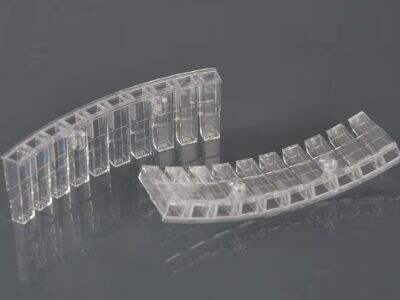Leter du etter gode enkeltbrukspipetter fra Kangwei Medical å bruke i ditt laboratorieeksperimentering? Du har faktisk landet på riktig sted???? Hvis du vil sørge for at dine eksperimenter gir de riktige resultater, er det avgjørende at du velger bare de beste enekoblinger. For å veilede deg videre, vil vi dele med deg flere måter å sjekke eller inspiserer koblinger for uansett hvilket materiale og kvalitet de har gjennomgått; studer om størrelsene på koblingen sammen med deres tippet passer; snakk om hvor mye det koster (og også dets miljøpåvirkning); gi nyttige tips for å bruke dem og ta vare på ikke bare vanlige delicate håndverktøy. Så la oss dykke inn!

Forskjellige typer av engangskoblinger
Her er forskjellige typer av En gang-bruk plast pipette Tilgjengelig og hvordan du velger den beste. Vi starter med plastpipetter. De er tilgjengelige i en rekke forskjellige størrelser og stiler som gjør dem perfekte for mange oppgaver. Deretter har vi glaspipetter. I visst grad, fordi disse pipettene er mer skjørt enn andre, men likevel de er vanlige mistenkte, og derfor bør vi gå forsiktigere. Men det gode nyheten er at glaspipetter kan brukes flere ganger hvis de renses etter hver bruk. Til slutt: Serologiske pipetter. Disse er så fine fordi du kan se volummerkene på dem, noe vi trenger for å måle væsken vår korrekt.
Pipette-materiale og kvalitetskontroll
En av de viktigste tingene å betrakte er, hva disse pipettene eller plastpipetter laget av materiale og kvaliteten er fin. Materialer for pipettekonstruksjon utføres av merke og natur av anvendelse. Få gode bedre pipetter og prøv å bruke dem alltid på samme måte som du har brukt dem før. Jo høyere kvalitet på din pipette, jo større nøyaktighet kan du være sikker på, dermed spare dine eksperimenter.
Velg den Riktige Pipetten og Tippet Størrelse
Nøyaktige volummål er avgjørende, og å velge den riktig størrelse på pipette med en passende tippet er nøkkel. De volumene som skal pippes rekker fra 0,5 mL opp til 100 ml, så du har et valg av størrelse basert på hvor mye væskevolum regning. Å velge en pipette som er for stor eller for liten kan kompromittere dine målinger. Også, sørg for at toppen på din pipette kan passes godt til den. En løs passende tippet kan føre til lekkasjer eller uavset kryss over forskjellige væsker, en situasjon du absolutt ønsker å unngå i ditt eksperiment.
Kostnader og Miljømessige Overveielser
Som du kan forvente, bruker vi alle disposablene pipetter i forskjellige størrelser i laboratoriet. Men det er også nødvendig å ta hensyn til prisen og hvor mye de skader vår planet. Det er imidlertid et lite problem: mye bruk-og-kast plastpipetter som vil vise seg å være dårlige for vår planet. En bedre valg ville være å gå for glaspipetter. Glaspipetter er gjentakelige og derfor mer miljøvennlige. Hvis du leter etter pipetter eller pipette topp boks , så gå til et sted hvor du kan finne billige typer av dem som fungerer godt for deres pris. Og å velge dem som beskytter miljøet også, er gode valg slik at vi hjelper til å holde vår verden trygg.
Råd om drift og vedlikehold av pipetter
Det er veldig viktig å bruke pipetter riktig for nøyaktige målinger og lengre holdbarhet. Følgende er noen av de viktige punktene du bør ha i tankene:
ALLTID SIP EN PIPETT TIL DENNS MÅLAVGRENSE. Dette fjerner behovet for fanget luft i dine målinger, en feilkilde.
Hold pipetten vertikalt inntil du er klar til å gi av væske. Det vil hjelpe deg å kontrollere strømmen bedre under behandlingen.
Når du overfører væsken, rull for å plukke opp. Hold på 45 grader når du bruker en pipette. Skytte væske i en jevn, nøyaktig og liten vinkel.
Det er viktig å kassere bulbpipetter etter én gang bruk. Dette vil hjelpe deg å holde risikoen for forurening eller blandinger av væsker unna fra din dispensator.
Reng din gjenbrukbare pipette godt, og lagre dem korrekt for å sikre at de forblir i god stand.
Til slutt, å velge de riktige engangspippetene for laboratoriet ditt er avgjørende for å oppnå optimale resultater i laboratorieeksperimenter. Forskjellige typer engangspippetter: tips om hva du bør vite om materialet disse er laget av, hvordan du velger den riktige størrelsen og sørger for at toppen passer; bruks-, omsorgs-, kostnads- og økologisk fødesels tips. Ved å overveie disse tipene, kan du nå ta en godt informert beslutning om hvilke pipetter du skal bruke for arbeidet ditt. Lykke til med eksperimentering!
 EN
EN
 AR
AR
 BG
BG
 HR
HR
 CS
CS
 DA
DA
 NL
NL
 FI
FI
 FR
FR
 DE
DE
 EL
EL
 HI
HI
 IT
IT
 JA
JA
 KO
KO
 NO
NO
 PL
PL
 PT
PT
 RO
RO
 RU
RU
 ES
ES
 SV
SV
 TL
TL
 ID
ID
 SR
SR
 UK
UK
 VI
VI
 HU
HU
 TH
TH
 TR
TR
 AF
AF
 MS
MS
 BE
BE
 IS
IS
 KA
KA
 BN
BN
 NE
NE
 MY
MY
 KK
KK
 UZ
UZ
